#South Africa Women in Ireland
Text


Kisses 😘
#team ireland#rugby sevens#olympic rugby#olympics#olympics 2024#women's sports#wospo#look at us go#stomping south africa#ireland
19 notes
·
View notes
Text
Alright, no one asked but before the matches fully get underway, here are my predictions for the women’s rugby 7s today:
1/2: New Zealand/Australia, I honestly don’t know which will win, I haven’t really seen either of these teams challenged yet, have to wait and see
3: Canada. Would love to say I think they’ll make the final, but I think Australia are just too powerful 😅. I do think they’ll beat the US for bronze though! Maybe a hot take, but I think Canada can take ‘em
4: rounding out the top 4, US. They’ve been good this tournament, but I don’t think they’re good enough to beat NZ or even Canada
5: I think France will take this one. Of the teams in the 5-8 I think they’re the strongest, honestly I expected them to medal at this tournament before Canada came by with a shocker
6: going with Great Britain for this one, they can take China I believe
7: Ireland, I don’t think they’ll manage to beat France
8: rounding us out, China. They’ve surprised me all tournament, so I might be wrong about this one, but I’m just not sure they’ve got enough to get by GB
9: Japan. Taking Japan for this just because I think how often they’ve beat Brazil this tournament has been funny 😅
10: obviously Brazil
11: I think South Africa might take this, but the 9-12 placing is where I’m least confident in my rankings
12: closing us out, that leaves Fiji. Sorry Fiji 😅 I just don’t think this tournament went the way you want
Would love to hear everyone else’s thoughts!
#olympics#olympics 2024#women’s rugby#rugby 7s#team fiji#team canada#team ireland#team great britain#team usa#team america#team france#team brazil#team japan#team china#team south africa#team new zealand#team australia#team gb
9 notes
·
View notes
Text
Imane Khelif.

In 2018 AIBA Women's World Boxing Championships, Khelif participated for the first time, where she ranked 17th after being eliminated from the first round.
In the 2019 AIBA Women's World Boxing Championships held in Russia, where she ranked 33rd after being eliminated from the first round against Natalia Shadrina.
Khelif represented Algeria in the lightweight event at the 2020 Summer Olympics in Tokyo. She was defeated by Ireland's Kellie Harrington in the quarterfinals.
Khelif participated in the 2022 IBA Women's World Boxing Championships, she faced Ireland's Amy Broadhurst in the final and was defeated.
She is not a warmachine. Khelif is a biological woman. Khelif is NOT transgender or transsexual. In Algeria, the country that Khelif represents, transgender identity is prohibited, changing sex or gender is not allowed in official documents, nor are medical or hormonal treatments allowed to transition to another sex. If she was transgender, Khelif would not be able to rapresent her country at all nor travel with an official passport with a female identity!
However, pop up this rumor she was disqualified from 2023 IBA's Women's World Boxing Championships due to high levels of testosterone. Later this was debunked by the same organization. Potentially, could be doping and it was all covered up by sport industry.
Edit: This disqualification happened three days after Khelif defeated Azalia Amineva, a previously unbeaten Russian athlete. The disqualification restored the Russian boxer's undefeated record and IBA has huge ties with the Russian government: the president Kremlev is a Putin supporter and the International Olympic Committee (IOC) expressed concerns about the IBA under Kremlev's leadership. The IOC has also been alarmed by the fact that the IBA's only sponsor was a Russian state-owned energy company (Gazprom) that supports the Russian invasion of Ukraine. Imane Khelif is a UNICEF ambassador, which could again have been seen as a problem by Russian-led IBA, since UNICEF condemned Russian invasion of Ukraine. IBA's allegations that Khelif had failed unspecified eligibility tests are suspicious, expecially because no medical evidence that Khelif has XY chromosomes or elevated levels of testosterone has been published.
The International Olympic Committee (IOC), cleared Khelif to compete in the 2024 Summer Olympics in Paris, confirming that she complied with all necessary eligibility and medical regulations for the event. The IOC noted that Khelif was a woman according to her passport and that this was not a "transgender issue".
She defeated Angela Carini in 42 seconds at the 2024 Olympics, after Carini decided to withdraw citing intense pain in her nose.
This remember me the 'Caster Semenya' case: after Semenya's victory at the 2009 World Championships, she was made to undergo sex testing, and cleared to return to competition the following year. The decision to perform sex testing sparked controversy in the sporting world and in Semenya's home country of South Africa. Later reports disclosed that Semenya has the intersex condition 5α-reductase 2 deficiency and natural testosterone levels in the typical male range.



In 2019, new World Athletics rules came into force preventing athletes like Semenya with certain disorders of sex development (DSDs) from participating in 400m, 800m, and 1500m events in the female classification, unless they take medication to suppress their testosterone levels. Semenya has filed a series of legal cases to restore her ability to compete in these events without testosterone suppression, arguing that the World Athletics rules are discriminatory.
As Khelif, Semenya is cis and has been accused by many people to be trans. Her story has, again, been used and abused to support the anti-trans agenda, claiming that two ciswomen are trans and are unfairly competing with women due to their superior "men strength".
I think Angela Carini was anxious and scared by days of reporter and far-right rumors about how Khelif is incredibly strong and unbeatable, even if Carini has better statistics and more victories in her career than Khelif herself (who was already a Olympics athlete), she was strumentalized by far-right propaganda and made a scene during the match due to anti-trans panic.


J. K. Rowling and Elon Musk, as always, had their small moment of shaming athletes. Most of people think that Carini has been strumentalized by anti-trans Italian propaganda and after being called out for harassing a cisgender woman, she claimed to be sorry for not having respected her adversary during the match.


Edit: more important thoughts on the matter in a detailed political perspective in Italy - A New York Times article develops more extensively what I wrote here.
https://www.nytimes.com/2024/08/01/world/olympics/boxer-quits-gender-angela-carini-imane-khelif.html?smid=threads-nytimes
Edit 2: Imane Khelif spoke against cyberbullism.
Edit 3: Since in those past days we talked a lot about cis women being called men for not meeting western TERFs standard, I should resurface this old post about how a group of Chinese cis runners were wrongfully called "men" by TERFs.
Edit 4: Elon Musk and J.K. Rowling have been named in the cyberbullying lawsuit filed by Olympic champion Imane Khelif.
Edit 5 - 13th Sept. 2024: Imane Khelif interview
Edit 6 - 13th Sept. 2024: Imane Khelif won gold medal in boxing. Appreciation post.
#vavuskapakage#imane khelif#jk rowling#fuck jkr#italian politics#politica italiana#Angela carini#olympics#2024 olympics#olympics 2024#paris olympics#paris 2024#paris olympics 2024#jk rowling is a transphobe#elon musk#elon musk is a moron#elon musk is an idiot#anti jkr#screw jkr#fuck jk rowling#tw misgendering#caster semenya#fuck elongated muskrat#fuck elon musk#fuck em#elon musk is an asshole#elon musk is a fraud#elongated muskrat#all my homies hate elon musk#all my homies hate jk rowling
134 notes
·
View notes
Note
hi! i was just wondering if you know if the concepts for cardassia and cardassian culture were at all inspired by the dune books? cardassia is a harsh, resource-poor desert planet, similar to how arrakis in dune has almost no water as a metaphor for scarcity, and they're both directly contrasted with peaceful and plentiful planets. because of this situation, both the fremen and cardassians have rigid social structures emphasizing the collective over the individual. also, the star trek canon about cardassia and dune both have a lot of covert political machinations with emphasis on the family as a political unit. and also the bene gesserit mental training and female superiority seems pretty similar to how on cardassia the children go through training to build up mental abilities like eidetic memory, and women are considered to be more rational and suited to scientific fields. sorry for the long question but there just seem to be so many similarities and i would love to know if that's intentional! thank you!
I can see how you think this, but no... If any novels inspired Cardassia, they were Kafka's The Trial, Orwell's 1984, and Conrad's The Heart of Darkness. But the biggest inspirations were historical. Nazi Germany, the DDR, Apartheid era South Africa, the British in Ireland, the Belgian Congo, and America in Vietnam (since I based a lot of what I wrote for Garak on my dad).
#ask me anything#tv writing#ask me stuff#ds9#star trek#star trek ds9#deep space nine#star trek deep space nine#deep space 9#star trek deep space 9#cardassia#cardassians
182 notes
·
View notes
Text
[ 📹 An Israeli warplane fired three missiles into a United Nations school sheltering thousands of displaced Palestinian families in Camp 2 of the Nuseirat Refugee Camp, in the central Gaza Strip, late on Wednesday night, resulting in more than 100 casualties in total. The casualties included more than 40 civilians who were killed, including 14 children and 9 women, while another 74 citizens were wounded, including 23 children and 18 women. The strikes come after weeks of fighting in Gaza's north and south have driven tens of thousands, if not hundreds of thousands, of civilians into the central areas of the enclave. ]
🇮🇱⚔️🇵🇸 🚀🏘️💥🚑 🚨
ISRAELI GENOCIDE OPERATION CONTINUES IN GAZA FOR DAY 244: MORE THAN 100 CASUALTIES IN ISRAELI AIRSTRIKE ON A UN SCHOOL HOUSING DISPLACED CIVILIANS IN GAZA, SPAIN TO JOIN SOUTH AFRICA'S LAWSUIT AT ICJ, MEDICAL EXPERTS SAY 25'000 SEVERELY SICK AND WOUNDED MUST LEAVE GAZA FOR TREATMENT ABROAD, ISRAELI OCCUPATION INVADES CENTRAL GAZA
On 244th day of the Israeli occupation's ongoing special genocide operation in the Gaza Strip, the Israeli occupation forces (IOF) committed a total of 6 new massacres of Palestinian families, resulting in the deaths of no less than 68 Palestinian civilians, mostly women and children, while another 235 others were wounded over the previous 24-hours.
It should be noted that as a result of the constant Israeli bombardment of Gaza's healthcare system, infrastructure, residential and commercial buildings, local paramedic and civil defense crews are unable to recover countless hundreds, even thousands, of victims who remain trapped under the rubble, or who's bodies remain strewn across the streets of Gaza.
This leaves the official death toll vastly undercounted as Gaza's healthcare officials are unable to accurately tally those killed and maimed in this genocide, which must be kept in mind when considering the scale of the mass murder.
Spain will join South Africa's lawsuit before the International Court of Justice (ICJ) at The Hague, according to an announcement made by Spanish Prime Minister, José Manuel Albarez.
Albarez is quoted as saying that “It seems that the application of the International Court of Justice’s precautionary measures towards Israel is still far away," adding that he hoped the decision would help the Court.
Spain becomes the second European country to join the South African lawsuit at the ICJ, while Ireland has also joined the suit. Chile and Mexico also recently joined the South African suit.
In other news, 90%, or nine out of ten children in the Gaza Strip, suffer from deficiencies in the nutrients that ensure their healthy growth and development. That's according to the United Nations International Children's Emergency Fund, also known as UNICEF.
In a statement issued on Thursday, UNICEF cautioned that “in the Gaza Strip, months of hostilities and restrictions on humanitarian aid have led to the collapse of the food and health systems, leading to catastrophic consequences for children and their families.”
The United Nations Children's Fund stated that data collected between December 2023 and April 2024 discovered that 9 out of 10 children from the Gaza Strip suffer from extreme food poverty and food insecurity, which means they consume two or fewer food groups each day to survive.
"This is evidence of the horrific impact of conflict and restrictions on families' ability to meet children's nutritional needs and the rapid rate at which children are at risk of life-threatening malnutrition," UNICEF warned, adding that "27 percent of children worldwide suffer from severe food poverty in early childhood, which amounts to 181 million children under the age of five."
Similarly, medical personnel in the Gaza Strip warned on Thursday that as many as 25'000 sick and wounded Palestinians in Gaza must travel outside the besieged enclave to receive treatment in foreign countries.
This comes as the Israeli occupation forces continue the closure of the Rafah and Karm Abu Salem border crossings, south of Gaza, preventing thousands of trucks loaded with humanitarian aid supplies from reaching desperate civilians, and also preventing the thousands of sick and wounded citizens from leaving Gaza for treatment abroad.
The medical sources pointed out that thousands of lives could be saved by allowing the severely sick and wounded to travel abroad for treatment, while their situation worsens under continued intense bombardment in Gaza, with the vast majority of hospitals in the enclave no longer functioning.
Previously, just 4'895 sick and wounded civilians were allowed by the Israeli occupation to travel to other countries for treatment during the period when the Rafah border crossing was still open.
Since then, the Israeli occupation has not allowed any Palestinians to travel abroad as a result of the closure of the crossings, beginning in early May.
Meanwhile, the Israeli occupation continued its assault on the Gaza Strip, with new ground offensive launched into Central Gaza after many weeks of fighting in the north and south of the enclave drove tens of thousands, if not hundreds of thousands, of Palestinian families into the central areas of the enclave.
According to reporting in the occupation media, the Zionist army carried out new ground offensives, launched by the 98th Division, focusing on the areas of the Bureij Refugee Camp, in addition to neighborhoods east of Deir al-Balah, both in the central Gaza Strip.
The occupation army earlier battled Hamas and other Resistance forces in the Bureij Camp back in January, but have not operated in Deir al-Balah until now.
Previously, the 98th Division was deployed to the Jabalia Camp, in the northern Gaza Strip, where occupation forces destroyed the vast majority of the camp's housing and infrastructure, leaving behind a shattered landscape of skeletal building frames and charred remains that included upwards of 70 decomposing bodies scattered around the camp.
The same Division also fought in the city of Khan Yunis, in Gaza's south, in an extraordinarily destructive ground operation that saw large sections of that city obliterated as well.
Although Deir al-Balah has not witnessed ground advances until now, the city has often been targeted by the occupation's bombing, shelling, missile and drone strikes.
The Zionist occupation army says the ground operation was launched in response to "intelligence on operatives and infrastructure" belonging to local Resistance forces in the area, both above and below ground, according to the army's claims.
The occupation army also admitted to launching a large wave of airstrikes against Resistance forces, including a strike that targeted a United Nations School housing displaced Palestinian families in the Nuseirat Camp, killing dozens of civilians and wounding many others.
The latest Zionist army massacre targeted the Al-Sardi prepatory boys' school in Camp 2 of the Nuseirat Camp, in the central Gaza Strip, where thousands of Palestinians were taking shelter from the occupation's bombs and bullets, resulting in the deaths of at least 40 displaced civilians and wounding scores of others.
Initial reports put the number of dead at 32, with at least 50 wounded from the assault, while the death toll continued to rise as the wounded succumbed to their injuries and the true toll of the strike came into focus, raising the number of killed overnight to 40.
Among those killed in the strike were 14 children and 9 women, while another 74 citizens were wounded from the occupation's criminal attack, including the wounding of at least 23 children and 18 women.
Gaza's media office says the Israeli occupation's bombing of the UN school was conducted by Israeli combat warplanes, which fired at least three American-made missiles into the school, resulting in over 100 casualties, many of whom were women and children.
At the same time, occupation attacks continued at dawn on Thursday, as occupation forces resumed their genocidal campaign for a 244th day.
In another atrocity, Zionist fighter jets bombed a residential house belonging to the Al-Madani family, also in the Nuseirat Camp, in the central Gaza Strip, killing at least 6 civilians and wounding a number of others.
IOF artillery detatchments also launched a violent bombardment of neighborhoods east of the Bureij Camp, also in central Gaza, while an occupation quadcopter drone opened fire near the Nakheel Hall in the Bureij Camp.
The occupation's artillery shelling also targeted east of the Bureij and Al-Maghazi Camps, in central Gaza, while occupation soldiers stationed along the so-called Netzarim axis fired several artillery shells into residential buildings belonging to civilians in the Tal al-Hawa neighborhood, southwest of Gaza City, as well as towards homes in the Al-Zaytoun neighborhood, southeast of the city.
Zionist warplanes similarly launched several raids targeting the eastern and central neighborhoods of the city of Rafah, in the southern Gaza Strip, while the Israeli occupation's armored vehicles fire heavy machine guns towards civilian residences east of Khan Yunis, south of Gaza.
Israeli artillery also shelled residential homes belonging to Palestinian citizens east of Al-Qarara, northeast of Khan Yunis.
Another citizen was killed when occupation warplanes bombed a civilian riding a motorcycle in the Nuseirat Camp, in central Gaza.
Between the series of devestating airstrikes that targeted the Al-Bureij, Al-Nuseirat and Al-Maghazi Camps, as well as east of Deir al-Balah, to Al-Qarara and Khan Yunis, more than 100 civilians were killed in total.
As a result of the occupation's assaults, all hospitals in the Rafah Governate, south of the Gaza Strip, have ceased functioning aside from field hospitals.
The Israeli occupation army also bombed an entire residential square in the center of the Shaboura Refugee Camp, in central Rafah, south of Gaza.
In the meantime, north of Gaza, Zionist occupation forces bombed several residential buildings in the al-Rimal neighborhood of Gaza City, resulting in the deaths of more than four civilians, while another airstrike targeted a residence in the Al-Zaytoun neighborhood, southeast of Gaza City, killing another three Palestinians.
Local civil defense personnel said they were able to recover a number of dead and wounded after an assault by Israeli occupation aircraft that targeted a residential building belonging to the Khala family, near the Khalla Station, north of Gaza City.
As a result of the Israeli occupation's ongoing special genocide operation in the Gaza Strip, the endlessly rising death toll now exceeds 36'654 Palestinians killed, including over 15'000 children and at least 10'000 women, while another 83'309 others have been wounded since the start of the current round of Zionist aggression, beginning with the events of October 7th, 2023.
June 6th, 2024.
#source1
#source2
#source3
#source4
#source5
#source6
#source7
#source8
#videosource
@WorkerSolidarityNews
#gaza#gaza strip#gaza news#gaza war#gaza genocide#genocide in gaza#war in gaza#israeli war crimes#israel#israeli occupation#israeli crimes#war crimes#crimes against humanity#palestine#palestine news#palestinians#free palestine#israel palestine conflict#gaza conflict#middle east#politics#news#geopolitics#world news#global news#international news#war#breaking news#current events#israeli crimes against humanity
45 notes
·
View notes
Text
For black history month, I think we should begin popularizing monsters from the African continent the same way European monsters are overpopularized. To that end, here's a list of some of the most famous folkloric figures from Africa!
Mmoatia
Origin: Ghana (Akan)
Creature it is not: Dwarf
(Singular: Aboatia) Mmoatia are a subclass of abosom (spirits in between Man and Creator) that live in the forests of Ghana. They are short, have curved noses, backwards feet, and a unique language made up of only whistling sounds. Whistling in the forest is a sure way to get their attention. According to legend, they are phenomenal herbalists that will sometimes share their knowledge with humans. When a person gets lost in the woods, they are said to have been taken by Mmoatia. Humans who come back after being taken will become incredible medicine men. In Ghana, Dust Devils are called "Mmoatia Mframa" (Wind of Mmoatia) because they are belived to be a portal to their world similar to how fairyrings are treated in Ireland.
Mmoatia are divided into three tribes: Black, White, and Red. Black Mmoatia are supposedly harmless, while White and Red ones are always up to some kind of mischief.
Adze
Origin: Ghana (Ewe)
Creature it is not: Vampire
In Ewe culture, the Adze is a type of demonic spirit associated with witchcraft. They take the form of a fire fly that, during the night, crawls inside human beings in order to posses them. People possesd by the Adze are said to be witches, who use the spirit to slowly drain the life force of people that they envy (Old witches target the young, Poor witches target the wealthy, enslaved witches target their masters as they should).
When targeting a person, the Adze will leave it's host human during the night and crawl into the house of the victim. When it's close, it will drain blood from the victim like a mosquito.
Werehyena
Origin: Pan-African
Creature it is not: Werewolf
Just like how there are Werewolf stories all over Europe, there are Werehyena stories all over Africa. Compared to werewolves, which are said to be men cursed to be monsters, Werehyenas are actually monsters that disguise themselves as humans only to eat it's friends during the night. The people most likely to be werehyenas are village outsiders and blacksmiths, who are associated with magic.
In Angola, there is a similar (but not the same) creature to the werehyena called the Kishi. It is literally a two-faced demon that has a handsome man's body and face in the front, and a hyena's face in the back. This creature lures unsuspecting women into relationships so that it may eat them. If the Kishi has any male children with it's prey, it teaches them the art of femicide.
Mami Wata
Origin: Pan-African
Creature it is not: Mermaid (ok, it kinda is a mermaid but I need to keep the joke running)
Even more wide-spread than the Werehyena, Mami Wata is a figure so popular that it is common for water spirits in Africa to be retroactively labeld as Mami Wata and take on her iconography.
The most famous picture of Mami Wata is actually a french painting of a black Caribbean snake charmer, who west africans later identified as Her. Mami Wata is worshipped as a powerful, female river spirit that controls the flow of the river, the rate at which fish can be caught, the money that men can make, and several other things important to humanity. She is also said to be a seductress, who sleeps with unsuspecting men only to later kill them for cheating on their wives. Indeed, Mami Wata is a defender of women and a slayer of sinful and abusive men.
In many places, it is common to believe that women who drown or go missing in bodies of water were taken by Mami Wata to be taught magic. The women who return become pristessess to her, while the women who never come back become new Mami Watas.
Impundulu
Origin: South Africa (Zulu)
Creature it is not: Thunderbird (no hate, Thunderbird gets constantly thrown into things where it shouldn't be by people who don't understand it. And those people tend to be not native)
Impundulu, or Lightning Bird (NOT THUNDER BIRD), is a person sized Hamerkop bird that has the power to control the weather and summon lightning. It is also creature of evil magic, allied with witches and it has a never ending hunger for blood. It is said to sometimes take the form of a handsom young men in order to seduce women (why dose that keep happening).
Impundulu are immortal, and the ones that serve as witch familiars are passed down in the family as the old master dies and the child becomes grown. The bird is immune to gunshots, stabbing, drowning, and poison. It's only weakness is fire.
#black history month#west african mythology#west african folklore#african fairy#african fantasy#fantasy#africanjujuism#dnd#d&d#mmoatia#adze#werehyena#kishi#mami wata#impundulu#blackblr
34 notes
·
View notes
Text
Why has Belgium vowed to back the ICJ’s verdict on Gaza ‘genocide’?
Unlike other European nations, Belgium has said it would support the international court’s decisions on South Africa’s case against Israel.
As the world anticipates a preliminary verdict from the International Court of Justice (ICJ) on South Africa’s genocide case against Israel, leaders in the European Union remain divided on how to interpret the decision.
Shortly after the two-day hearing at the world’s top court in the Hague earlier this month, where South Africa told the ICJ that Israel’s actions in the Gaza strip violated the UN’s 1948 Genocide Convention, Germany, Austria and the Czech Republic – staunch allies of Israel – rejected these claims. Hungary condemned the case, while Berlin declared that it would intervene on Israel’s behalf at the ICJ.
Last week, France, which is home to Europe’s largest Muslim and Jewish minorities and has been in the headlines for banning pro-Palestine protests since October 7, chimed in, saying Paris also does not support the ICJ case against Israel.
“To accuse the Jewish state of genocide is to cross a moral threshold,” said French Foreign Minister Stephane Sejourne.
Other EU nations have remained silent on the court case.
Slovenia is an exception, having announced its support for another ICJ case against Israel regarding Palestinian rights.
And, among the bloc’s more outspoken critics of Israel’s military conduct in Palestine, Ireland has adopted a cautious stance. In Spain, the minority left-wing Sumar party in the coalition government backed South Africa’s case.
Last week, in Belgium, socialist politician Caroline Gennez, minister of development cooperation and urban policy, said the country would support to the ICJ’s decision.
“If the International Court of Justice calls on Israel to cease its military campaign in Gaza, our country will fully support it,” she said in a social media post.
At a news conference in Brussels on Friday, Ludivine Dedonder, defence minister, reiterated: “Today, the Belgian government is speaking out in favour of an immediate ceasefire in Gaza, the unimpeded delivery of humanitarian aid, and support for the ICJ.”
What’s behind Belgium’s position?
The prevailing European view since October 7 has been that Israel has a right to self-defence against the Palestinian group Hamas, as long as it stays within the boundaries of international law.
But as the latest escalation of the Israel-Palestine conflict rages on, some Belgian leaders have been more openly critical of Israel’s actions as the Palestinian death toll mounts.
After Hamas attacked southern Israel in early October, killing 1,139 people, Israeli forces have bombarded Gaza, the densely populated Strip Hamas governs with a pre-war population of 2.2 million people. During air attacks and as part of its ground invasion, the Israeli army has killed more than 25,000 people, among them many women and children, and stands accused of widespread atrocities.
In November, the Belgian government, a coalition of seven political parties, said 5 million euros ($5.4m) from the federal government will be used to support the International Criminal Court (ICC) in The Hague to investigate possible war crimes in Israel and Gaza.
Brigitte Herremans, a postdoctoral researcher at the Human Rights Centre at the University of Gent in Belgium, told Al Jazeera the tiny European country traditionally adopts strong positions on international law with regard to the Middle East conflict.
“Observers would say that it also has to do with Belgium’s own history of being occupied historically by foreign powers,” she added.
During both world wars, Belgium was under German occupation.
Herremans said that Belgium’s stance today is similar to its previous positions on other foreign policy issues, such as the Iraq war.
“In general, we always saw Belgium somehow stick to a position that the acquisition of territory by force wasn’t accepted,” she said.
But Marc Botenga, of Belgium’s leftist Workers’ Party and an EU lawmaker, said the government’s support to the ICJ is still limited.
“If you look closely at their statement there is no active attitude to actually support the South African case against Israel. The government just says they will support whatever decision the ICJ takes, which is logical since all member states of the United Nations are supposed to support the institution’s court,” Bottenga told Al Jazeera. “However we have to commend the Belgian public for this stance which other EU nations have not really taken.”
Large protests in different Belgian cities have played a role in pressuring the government to call for a ceasefire in Gaza, he said.
Meanwhile, Belgium has declared its participation in the EU Red Sea Mission against Yemen’s Houthis, the Iran-linked group which says its recent attacks on ships linked to Israel or its allies are aimed at pressuring officials to stop the onslaught of Gaza.
“That’s not the kind of stance we want,” Bottega said of Belgium’s participation.
Herremans said that since Belgium currently holds the presidency of the Council of the European Union – a decision-making body in which ministers coordinate policies and adopt laws – his country is responsible for developing consensus.
“Belgium has to take into account the position of staunch pro-Israeli countries, so [it] might have to be more cautious and less vocal on international law. But it will not take a fundamentally different position from what it always has,” she said.
Belgium’s position on Israel-Palestine
Historically, Belgium has shown solidarity towards Palestine while also supporting Israel.
At the UN in 2012, it voted in favour of giving Palestine “non-member” observer status. Last year, it supported a UN resolution ordering the ICJ to investigate the Israeli occupation of Palestinian territories.
But discussing the Israeli-Palestinian issue in the Parliament can be difficult, because of diverse views between political parties in the Flanders in the north, Wallonia in the south, and the Brussels region.
Some Belgian sources told Al Jazeera that of the seven coalition partners, the progressives – Greens and Social Democrats – believe concrete measures have to be taken to ensure international law is applied in the Gaza Strip and the occupied West Bank with regard to the ICJ case.
In recent months, the Flemish Liberal Party of Prime Minister De Croo and Flemish Christian-Democrats have also toughened their stance on the situation in Palestine.
In November, the premier described Israel’s campaign in Gaza as “disproportionate” as he condemned the army’s bombing of Gaza refugee camps.
But the French-speaking Liberal Party, to which the foreign affairs minister belongs, has traditionally been pro-Israel.
Elections
Looking ahead, Belgium heads to the polls in June, which could end up shifting the country’s stance if a new government comes into power.
Fourat Ben Chikha, vice president of the senate, the federal parliament’s upper house, told Al Jazeera that even if the current coalition changes, as an international community, de-escalation and respect for human rights and international law should be every Belgian government’s priority.
Willem Staes, senior Middle East adviser at 11.11.11, a Belgian international solidarity organisation which lobbies Belgian and European governments to uphold human rights, said that regardless of the Belgian government’s composition, foreign policy has traditionally focused on fighting against impunity and promoting accountability.
“The current government is consequently applying this logic and leading the way at EU level. So providing support to the ICJ and the ICC, or calling for a permanent ceasefire, is not about being ‘pro-Palestinian’ or ‘anti-Israel’,” Staes told Al Jazeera.
“It’s about common sense and choosing the only logical side, which is the side of international law. The fact that this is considered ‘radical’ by some tells you everything you need to know about the state of European politics.”
#international court of justice#icj#belgium#free palestine#palestine#save palestine#gaza#save gaza#free gaza#world news#current events#israel#israel palestine conflict#israeli apartheid#war on gaza#gaza strip#gazaunderattack#gaza genocide#palestinian genocide#ceasefire#stop the genocide#genocide
48 notes
·
View notes
Text
Women’s National Teams Nicknames

Albicelestes (Argentina)

The Matildas (Australia)

As Canarinhas (Brazil)

The Steel Roses (China)

Las Chicas Superpoderosas (Colombia)
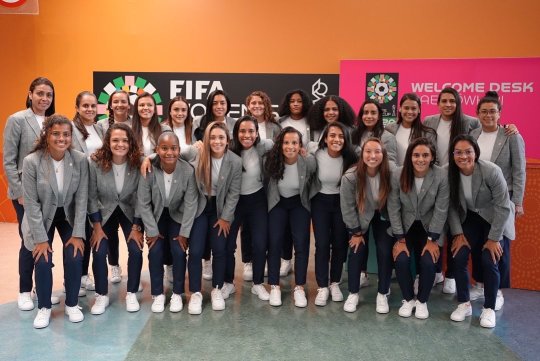
Las Ticas (Costa Rica)
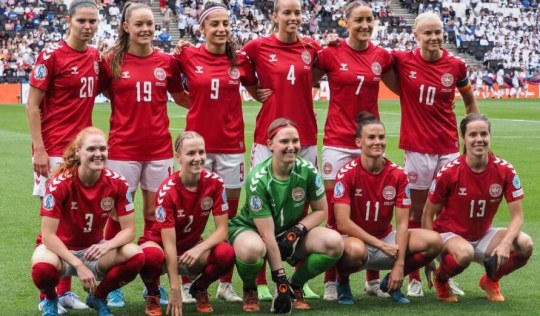
De rød-hvide (Denmark)

The Lionesses (England)

Les Bleues (France)

Die Nationalelf (Germany)
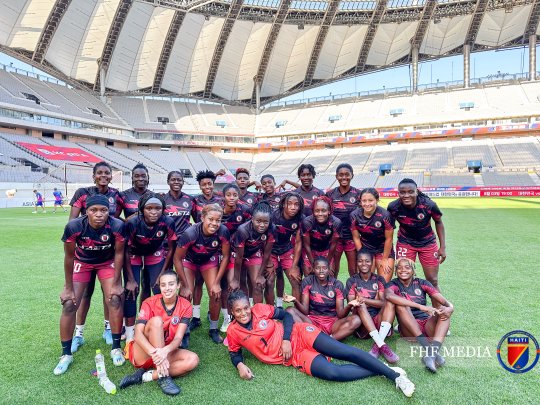
Les Grenadières (Haiti)

Le Azzurre (Italy)

Reggae Girlz (Jamaica)

Nadeshiko (Japan)

Taegeuk Nangja (Korea Republic)
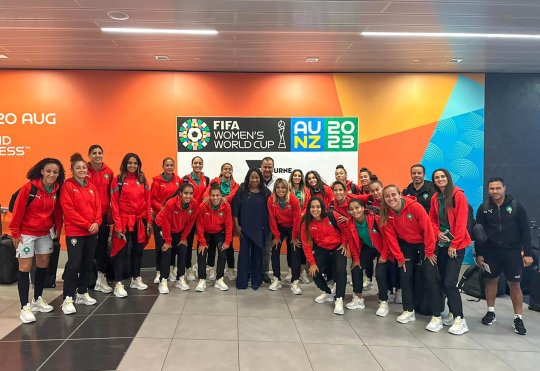
Atlas Lionesses (Morocco)

Leeuwinnen (Netherlands)

Football Ferns (New Zealand)
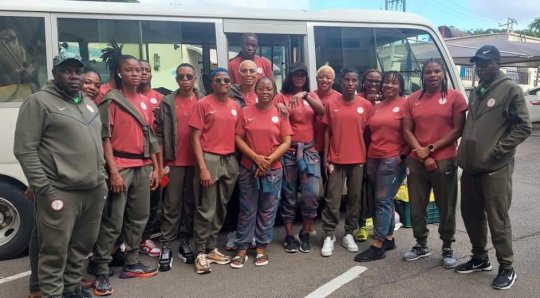
Super Falcons (Nigeria)
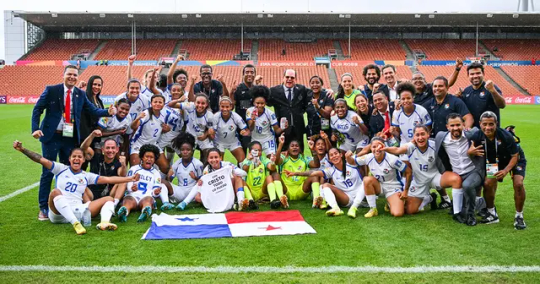
Las Canaleras (Panama)

Filipinas (Philippines)

As Navegadoras (Portugal)

The Girls in Green (Republic of Ireland)

Banyana Banyana (South Africa)

Las soñadoras (Spain)
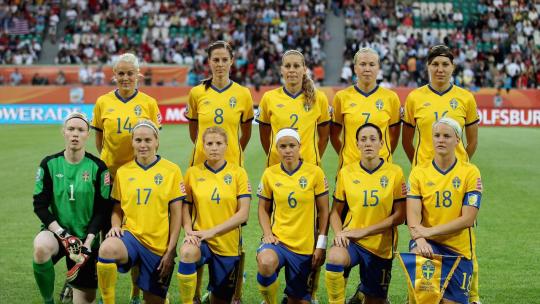
Blågult (Sweden)

Nati (Switzerland)
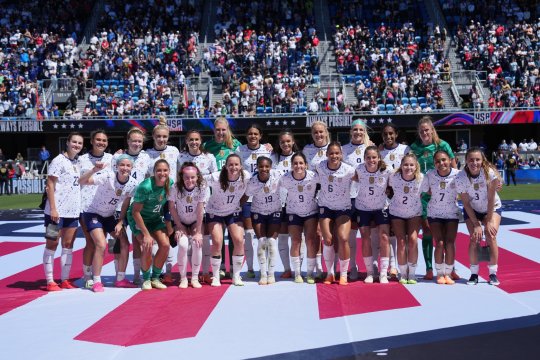
The Stars and Stripes (USA)

The Golden Girls (Vietnam)

The She-polopolo (Zambia)
#2023 fifa women’s world cup#Argentina WNT#Australia WNT#Brazil WNT#Canada WNT#China WNT#Colombia WNT#Costa Rica WNT#Denmark WNT#England WNT#France WNT#Germany WNT#Haiti WNT#Italy WNT#Jamaica WNT#Japan WNT#Korea Republic WNT#Morocco WNT#Netherlands WNT#New Zealand WNT#Nigeria WNT#football#fussball#fußball#foot#fodbod#futbol#futebol#soccer#calcio
121 notes
·
View notes
Text
FYI hetalia fans these are the nations competing in this year's women's world cup
Argentina, Australia, Brazil, Canada,
China, Colombia, Costa Rica
Denmark, England, France,
Germany, Haiti, Ireland, Italy
Jamaica, Japan, Korea
Morocco, Netherlands, New Zealand
Nigeria, Norway, Panamá
Philippines, Portugal, South Africa
Spain, Sweden, Switzerland,
United States, Vietnam , and Zambia
#hetalia#fifatalia#hws australia#hws canada#hws brazil#hws argentina#hws costa rica#hws colombia#hws china#hws denmark#hws england#hws france#hws germany#hws haiti#hws ireland#hws italy#hws south korea#hws netherlands#hws norway#hws philippines#hws portugal#hws spain#hws sweden#hws switzerland#hws south Africa#hws america#hws zambia#hws vietnam#nyotalia
78 notes
·
View notes
Text
When is the Women’s World Cup?
It will begin on Thursday, July 20, 2023 to Sunday, August 20.
All the key dates are as follows.
First match: New Zealand vs. Norway — July 20 followed by Australia vs. Republic of Ireland
Group stage: July 20 – August 3
Round of 16: August 5 – August 8
Quarterfinals: August 11 & 12
Semifinals: August 15 & 16
Third-place playoff: August 19
Final: August 20
Where is it being held?
Of the 64 matches throughout the tournament, 35 will be played in Australia and 29 in New Zealand.
The latter will host the first game of the World Cup at Eden Park in Auckland while Stadium Australia in Sydney will be the venue for the final.
Here is how the groups look.
Group A: New Zealand, Norway, Philippines, Switzerland
Group B: Australia, Canada, Nigeria, Republic of Ireland
Group C: Costa Rica, Japan, Spain, Zambia
Group D: China, Denmark, England, Haiti
Group E: Netherlands, Portugal, United States, Vietnam
Group F: Brazil, France, Jamaica, Panama
Group G: Argentina, Italy, South Africa, Sweden
Group H: Colombia, Germany, Morocco, South Korea
#fifa wwc 2023#women's world cup#wwc 2023#football#woso#the first tag should be consistently used if you wanna filter this stuff#im posting this bc i don't want to keep digging into articles repeatedly lol#ref
218 notes
·
View notes
Text
WWC 23 captains armbands from matchday 1:
Unite for inclusion: New Zealand, Ireland, Canada, Philippines, Switzerland, Spain, USA, Vietnam, Zambia, England, Denmark, Sweden, Netherlands, Portugal, France, Italy, Panama
Unite for indigenous peoples: Australia
Unite for peace: Norway
Unite for ending violence against women: Costa Rica, South Africa, Germany
Football is joy, peace, hope, love, passion: Nigeria
Unite for gender equality: Japan, Brazil
Football unites the world: Haiti, China, Jamaica, Argentina, Morocco
#I am back with something completely irrelevant nobody cares about#and I'm still not 100% sure on Maren#but after some analysis I think that's the more likely option
43 notes
·
View notes
Text
2023 Women's World Cup records
In addition to breaking numerous worldwide social media and viewing records, the 2023 Women's World Cup set and broke a number of unique tournament records as well. The players and teams that participated in this WWC should all feel extremely proud for the history they have made. Their performances continue to show the world that these athletes are capable of so much more than they are ever fully recognized for.
First team from their nation to qualify for a men’s or women’s senior FIFA tournament: Vietnam WNT
8 nations had their debuts for first time appearing in a FIFA women’s World Cup: Haiti, Portugal, Zambia, Vietnam, The Philippines, Republic of Ireland, Morocco, and Panama.
Canadian midfielder Quinn starts for Canada and becomes the first non-binary athlete to play at a FIFA World Cup.
Christine Sinclair (Canada) and Marta (Brazil) become the 3rd and 4th players in history to appear in 6 World Cup competitions men or women, with Homare Sawa (Japan) and Onome Zeno (Nigeria) being the other two.
The player with the record for most world cup appearances in history remains Brazil’s Formiga, the only player to compete in 7 world cups (men or women).
Kristine Lilly still holds the record for most WC appearances by men or women with 30 games played - a record set and held since 2007. Followed by Formiga with 27 as of 2019 and Lionel Messi with 26 as of 2022.
Brazil’s Marta still holds the all time leading record for most goals scored across all World Cup competitions with 17 goals in 23 appearances across 6 tournaments.
Zambia’s Lushomo Mweemba scores the fastest goal of this year’s tournament in group stage at 2min 11 sec, also marking Zambia’s first ever world cup goal in their debut.
The fastest goal in a FIFA Women’s World Cup has stood for over 30 years - it remains the goal scored by Lena Videkull of Sweden, who scored after just 30 seconds against Japan in the inaugural 1991 tournament.
Zambia’s Barbra Banda scores the 1000th goal in WWC history.
Nouhaila Benzina of Morocco becomes the first Women’s World Cup player to wear a hijab.
Ary Borges of Brazil scores a hat trick in her WWC debut and the first hat trick of the tournament.
First Caribbean nation to reach the round of 16 in WWC history - Jamaica
First Arab nation to qualify for a WWC and reach the round of 16 in WWC history - Morocco
Of the eight debutants, Morocco was the only one to advance to the round of 16.
Two teams reached the round of 16 having conceded no goals so far in the tournament- Japan and Jamaica.
First time four African nations have been represented at a WWC with three of them qualifying for the knock out stage at this years competition - South Africa, Morocco, and Nigeria.
3 of the 4 African nations appearing in this year’s WWC all finished 2nd in their groups (Morocco, South Africa, and Nigeria).
The US suffered its earliest elimination in WWC history, getting knocked out in the round of 16. The U.S. has never finished below 3rd place in all previous editions of the competition.
Sweden’s Zećira Mušović sets a new record for most saves in any WWC 2023 game with 11 saves vs the US in the round of 16.
First manager to lead two different nations to a World Cup final (Netherlands and England)- Sarina Wiegman
First goalkeeper to take and convert a PK in a WWC penalty shootout - Alyssa Naeher
Golden ball (best overall player of the tournament) - Aitana Bonmatí
Silver ball - Jenni Hermoso
Bronze ball - Amanda Ilestedt
Golden boot (most goals scored in the tournament) - Hinata Miyazawa (5 goals)
Silver boot - Kadidiatou Diani
Bronze boot - Alexandra Popp
Golden glove (best goalkeeper of the tournament) - Mary Earps
FIFA young player award (best player of the tournament under 21 years old) - Salma Paralluelo
FIFA fair play award (team with best record of fair play during the tournament) - Japan
Best mascot of the tournament (unofficial) - Waru
Longest penalty shootout in World Cup history (20 penalties taken) - Australia vs France quarter final
The 2023 competition was hosted by Australia and New Zealand, making it the first edition to be held in the Southern Hemisphere, the first Women's World Cup to be hosted by two countries, and the first FIFA senior competition for either men or women to be held across two confederations (Asia and Oceanic).
First edition of the women’s tournament to feature an expansion to 32 teams and 64 matches, and largest women’s sporting event in history with 32 teams and 736 players.
Only team to play all matches (group stage + knockout) undefeated with a 6-0-0 record - England
All 4 previous winner nations (US, Germany, Norway, and Japan) were eliminated before the semifinal stage, marking the first time this has happened in the competition’s history.
For the first time in its 32 year and 9 tournament history, the WWC has a new champion (Spain) and new runner up (England) in 2023, with both nations never having made it to the final stage before.
Only the 2nd nation in history to win both a men’s and women’s World Cup - Spain
Top scoring country at the 2023 WWC - Spain with 18 goals
First time a senior English football team has made it to a WC final in 6 decades - England WNT
First time advancing past quarterfinals in their WWC history and first host nation to advance to semifinals in 20 years - Australia placed 4th place for best in all 8 WWC competitions they’ve participated in and broke attendance records through all stages of the tournament, with an overall stadium attendance across all matches at 1.978 million.
More than 1.5 million tickets were sold for the WWC, surpassing the entire tournament’s projected target in the first 5 days alone.
Two attendance records were broken for both host nations on day one of the WWC - largest crowd ever for a men’s or women’s football game in New Zealand (42,137) and largest crowd ever for a women’s football game in Australia (75,784).
Brazil's opening match v Panama was simulcast live on TV Globo and SporTV, delivering a combined audience of 13.9 million viewers - higher than any audience in the territory during the 2007, 2011, and 2015 WWC.
China v England produced the highest audience for a single match, reaching 53.9 million viewers, becoming the highest in any global market so far.
17.15 million people tuned into the Australia v England semifinal cumulatively across Channel 7, Optus Sport, venues, and live-sites, comprising approx 64% of the entire Australian population - the biggest television event not just in any sport in the country, but in Australia’s television history.
The record for highest single match attendance still remains the 1999 WWC final between the US and China with 90,185 in attendance - a number that hasn’t been reached since the men’s tournament at the 1994 WC final between Italy and Brazil at 94,194.
The largest 2023 attendances were at Stadium Australia in Sydney, which saw four capacity-crowd fixtures, including Australia's opening win over Republic of Ireland and the final between Spain and England. The crowd of 75,784 was a record home audience for a women's football match in Australia and the third largest individual crowd attendance in Women's World Cup history. Over 50% of all matches had near sell out or at stadium capacity with a total of 1,977,824 fans in attendance at the 64 games in total, setting a new record for highest overall attendance in Women’s World Cup history across all 9 editions of the tournament.
Highest grossing Women’s World Cup in history with a revenue of over half a billion dollars ($570 million), surpassing the projected revenue estimate by $100 million.
#wwc23#wwc 2023#fifa women's world cup#woso#attendance and records#wwcedit#I had to throw the waru one in there#for my own heart#waru 🥺
30 notes
·
View notes
Text
Ok revised predictions:
1. New Zealand, want to give it to Canada, but I just, New Zealand have looked too strong
2. Canada!!!
3. Australia, I don’t think the US are capable of beating this Australian team, they’ve been in great form this tournament. However they were a little shaky against Canada so who knows
4. Rounding out the top 4, the US
5. Sticking with France here, I do think they’ll beat China, but China have been kind of dangerous so I’m open to being proved wrong
6. China
7. Great Britain. This one does feel like it will be close today, and I’m not totally confident, but I think GB will come out strong and take this match
8. Ireland. Sorry Ireland, I wish you could’ve gone further ):
9-12 staying the same, and I see I was right with Fiji v South Africa. We’ll see how Japan and Brazil do now! I think it’ll be tight
#olympics 2024#olympics#rugby 7s#women’s rugby#team canada#team ireland#team south africa#team brazil#team new zealand#team australia#team japan#team gb#team great britain#team america#team usa#team france#team china#team fiji
9 notes
·
View notes
Photo
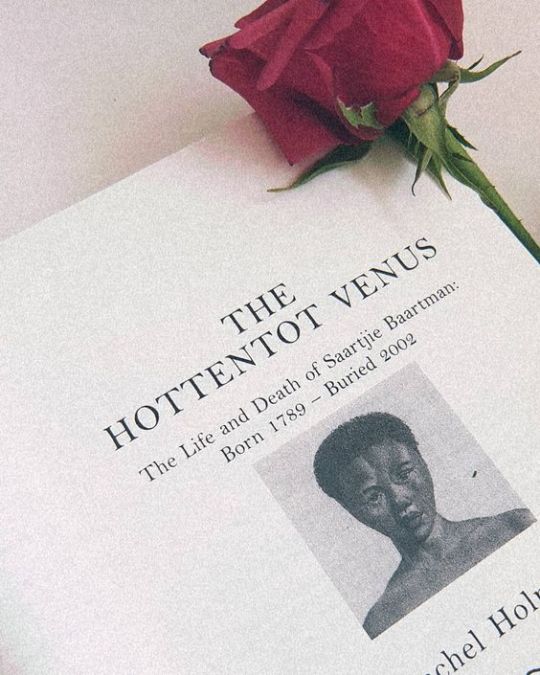
Saartjie (Sara) Baartman was one of the first black women known to be subjugated to human sexual trafficking. She was derisively named the “Hottentot Venus” by Europeans as her body would be publicly examined and exposed inhumanly throughout the duration of her young life. Moreover. her experience reinforced the already existing and extremely negative sexual fascination with African women bodies by the people of Europe.
Sara Baartman was born in 1789 at the Gamtoos River, now known as the Eastern Cape in South Africa. Baartman and her family were members of the Gonaquasub group of the Khoikhoi. Baartman grew up on a colonial farm where she and her family most likely worked as servants. Her mother died when she was aged two and her father, who was a cattle driver, died when she was still a young girl.
By her teenage years Baartman married a Khoikhoi man who was a drummer. They had a child together who died shortly after birth. When Baartman was sixteen, her husband was murdered by Dutch colonists. Soon after, she was sold into slavery to a trader named Pieter Willem Cezar, who took her to Cape Town where she became a domestic slave to his brother, Hendrik. On October 29, 1810, although she could not read, 21-year-old Baartman supposedly signed a contract with William Dunlop, a physician, who was a friend of the Cezar brothers.
This contract required her to travel with the Cezar brothers and Dunlop to England and Ireland where she would work as a domestic servant since technically slavery had been abolished in Great Britain. Additionally, she would be exhibited for entertainment purposes. Baartman would receive a portion of earnings from her exhibitions and would be allowed to return to South Africa after five years. However, the contract was false on all details and her enslavement continued for the remainder of her life.
Baartman was first exhibited in London in the Egyptian Hall at Piccadilly Circus on November 24, 1810. Her public treatment, however, quickly drew the attention of British abolitionists who charged Dunlop and the Cezars with holding Baartman against her will. The court ruled against Baartman after Pieter Cezar produced the contract that had been signed by Baartman. Baartman also testified that she was not being mistreated.
The publicity generated by the court trial increased Baartman’s popularity as an exhibit. She was taken on tours throughout England and by 1812 as far away as Limerick, Ireland.
In September 1814, after staying four years in Great Britain, Baartman was taken to France and sold to S. Reaux, an exhibitor who showcased animals. He put Baartman on public display in and around Paris, often at the Palais Royal. He also allowed her to be sexually abused by patrons willing to pay for her defilement. Reaux garnered considerable profit due to the public’s fascination with Baartman’s body.
Sara Saartjie Baartman died in Paris on December 29, 1815 at the age of 26 for unknown reasons. Even after her death, many of her body parts would go on display at the Musée de l’Homme (Museum of Man), in Paris to support racist theories about people of African ancestry. Some of the body parts remained on display until 1974.
In 1994 South African President Nelson Mandela formally requested that Baartman’s remains be returned to South Africa. On March 6, 2002, her remains were returned and buried at Hankey in the Eastern Cape Province.
71 notes
·
View notes
Text
By: Keith Woods
Published: Jul 2, 2023
A look at slavery outside of the West
It has become popular to blame White people for slavery, to the point that many actually believe slavery was invented by or exclusively practiced by Europeans.
But the history of slavery outside the West is far more brutal.

The Arab slave trade emerged in the 7th century, 10 centuries before the Atlantic slave trade
Arabs sold Africans to the Middle East for a variety of jobs such as domestic work or harem guards - castrating male slaves was common, causing over half of males to bleed to death

The Arab slave trade was particularly brutal: it's estimated that 3/4 captured slaves died before they reached the market for sale
Historians estimate that between 10 and 18 million people were enslaved by Arab slave traders, including women and children taken as concubines.
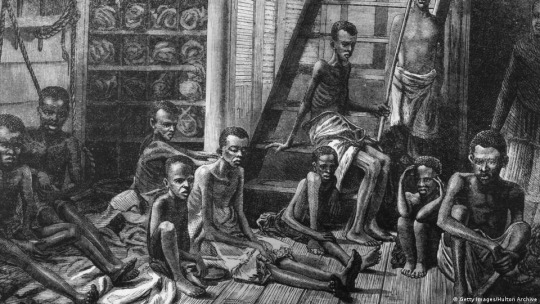
Arabs did not create the slave trade out of nothing, in fact, enslaving conquered tribes was already common practice in Central Africa when they arrived.
The West African Songhai Empire relied heavily on captured slaves in all levels of society, even as soldiers.

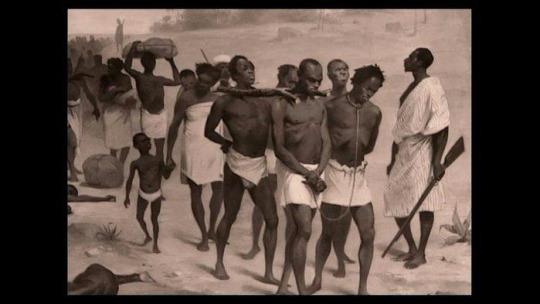
Africans themselves also played a large role in facilitating the trans-Atlantic slave trade.
African tribes conducted raids on rival groups to provide slaves for sale. African middlemen facilitated trade between European traders and African suppliers.



The Arabs also had a slave trade in Europe. Estimates are that up to 1.25 million Europeans were enslaved by Barbary pirates, who would raid villages in coastal countries like Italy, France, England and Ireland, bringing them to North Africa for sale.

In some cases entire villages would be captured, such as the Irish coastal village of Baltimore, entirely raided in 1631.
These slaves faced a brutal future, engaging in hard labour or sexual servitude, and spending nights hot and overcrowded prisons called bagnios.



Many slaves captured by Barbary pirates were sold eastwards into the Ottoman Empire. Slavery was central to the Ottoman Empire, most towns had dedicated slavery markets called Yesirs.
Slaves came from Africa, the Caucasus, the Balkans and Eastern & Southern Europe.

Sexual slavery was a big part of Ottoman society. Slavic women were popular slaves, and Köçeks became a popular source of entertainment in the 19th century:
These were young boys, usually from European backgrounds, who were circumcised, cross-dressed and trained as dancers.


Hereditrary slavery is recorded in China dating back to the Xia Dynasty in 2100 BC. Africans purchased on the Silk Road were used as a sign of wealth.
After Chinese law began to treat women as property around 1000AD it was common to sell daughters and sisters into slavery.
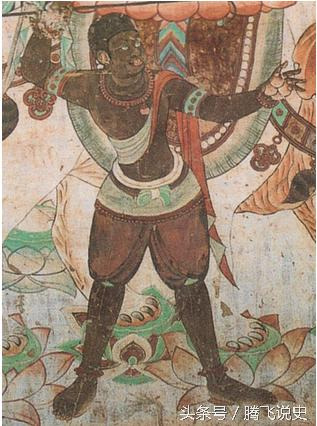

The Mongols enslaves tens of thousands of Chinese as punishment for resistance.
In the post-Mongol Ming Dynasty, thousands of slaves were employed to do bureaucratic jobs for the government, and rich families also employed thousands of slaves to perform menial labour.

Slavery was common in American civilizations like the Aztec and Maya
Among the Aztecs, slavery was a punishment for a variety of crimes or even failure to pay taxes. Husbands and wives sold each other in times of economic hardship. Slaves were identified by wooden collars.
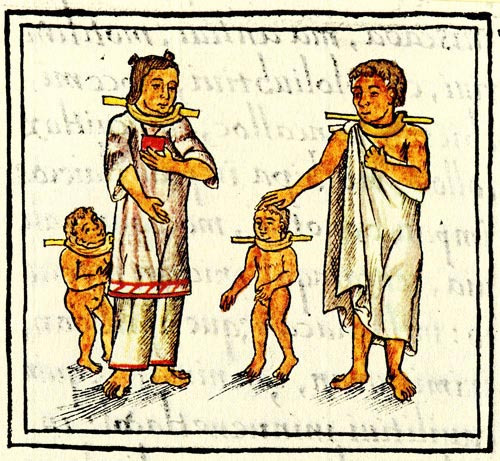
Slavery was also common practice in the civilizations of South-East Asia.
The Khmer Empire had a massive slave class that did much of the work building monuments like Angkor Wat. Historians estimate 25-35% of the population of Thailand/Burma were slaves in the 17th century.
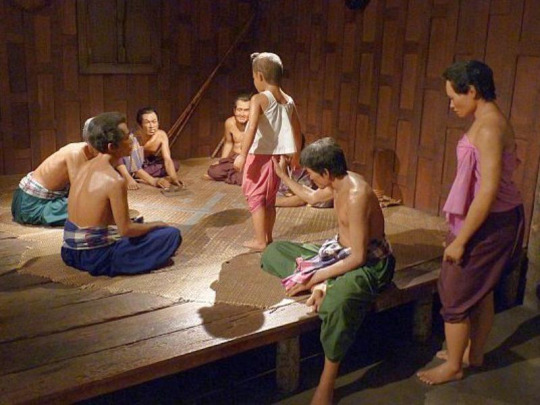

Slavery also existed among Native American tribes. Slavery was common practice among Northwest tribes like the Tlingit, for whom one third of their population during the mid-1800s were slaves.
Various tribes practiced debt-slavery and enslaved captives of other tribes.
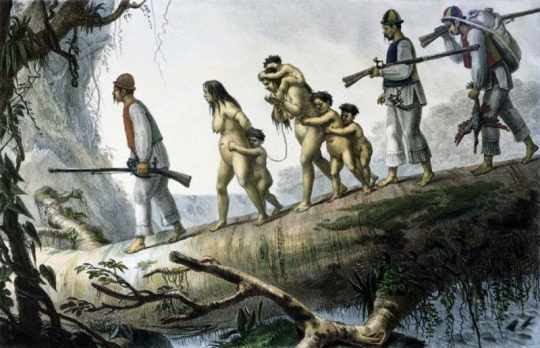

The only difference between these cases of slavery and that practiced by Europeans is that Europeans abolished slavery on humanitarian grounds, and spread this across the globe.
The intense focus on the White role in slavery is a product of widespread Anti-White animus.

==
American exceptionalism comes in two varieties: "we're exceptionally virtuous," and "we're exceptionally evil."
Both rely on lying about or being ignorant of history.
https://www.nationsreportcard.gov/dashboards/schools_dashboard.aspx
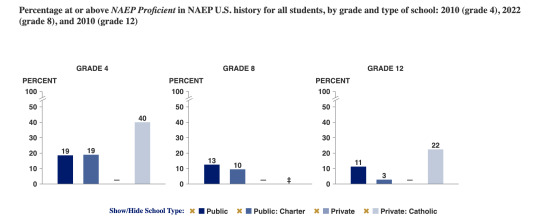
And that's just American history. Can you imagine world history?
#Keith Woods#slavery#history#history of slavery#exceptionalism#American exceptionalism#inverted exceptionalism#religion is a mental illness
26 notes
·
View notes
Text
12. why the 1880s?
something about this decade really sings to me. I find in particular, nearing the end of the nineteenth century, so much was happening on around the world in terms of arts, politics, technology, colonization. world events and global news don’t personally reach the day-to-day lives of the everyday folk, but they are an important part in gauging what life, thought, and society was about—what things were important then and now?
basically for myself, reminding me of notable things that occured during the 1880s—some thematic, some of relevance to context and characters, and the rest just ?? interesting and/or wild?
cocaine is a hot new cure for everything and anything. perscribed, sold in foods and more. heroine introduced as a lesser-addictive substitute for morphine…
lots of developments in fields of psychology; many experiments and happenings; Freud starts his work 1886.
1880-1914 had +twenty million immigrants to the United States: Germany, Ireland, England, China had the most arrivals.
William Dorsey Swann, the first self-proclaimed drag queen, organizes a series of drag balls in Washington, D.C. 1880-1890s.
Jack the Ripper claims his “first” victim in 1888 White Chapel, London. big scare.
Sherlock Holmes first appears in Arthur Conan Doyle’s A Study In Scarlet as part of the British magazine’s Beeton’s Christmas Annual in 1887.
Strange Case of Dr. Jekyll and Mr. Hyde by Robert Louis Stevenson is published in 1886. Gothic fiction, drawing from emerging fields of science and psychology. & Treasure Island was published earlier in 1883 by him too!
Mark Twain drops The Prince and the Pauper (1881), Adventures of Huckleberry Finn (1884), A Connecticut Yankee in King Arthur’s Court (1889).
Bel-Ami, Guy de Maupassant’s second novel is published in 1885. about a man who seduces and manipulates high society French women in the French colonies for power and wealth. MOVIE WAS ADAPTED IN 2012 STARTING ROBERT PATTINSON LOL
western European art movements very romantic and swirly and pretty: Monet, Debussy xoxo.
meanwhile, African American ragtime music becomes the “pop” music across the pond here.
North Dakota (1889), South Dakota (1889), Montana (1889), Washington (1889) become states.
train segregation laws flag beginning of Jim Crow; Civil Rights Movement of 1875 voided, making discrimination in private is not illegal, and prohibiting state intervention to personal or commercial segregation. l*nching continues throughout the south. slavery may be over on paper, but indentured labour is legal.
1882 infamous O.K Corral gunfight.
Gold Rush continues, all over the world—South Africa, to British Columbia, to California, to Argentina, to Russia-China borders.
centuries of American “Indian” wars continue.
American Dawes Act of 1887 granted American government authorization to regulate indigenous lands, including creating and assigning and enforcing reservations.
Sitting Bull’s 1883 speech of the atrocities experienced at the hands of white American settler colonists.
Canadian Pacific Railway 1881-1885. foreign labourers were hired to do a lot of heavy, dangerous, unwanted work. in America, more than 100,000km of tracks were laid by majority Chinese, Irish, Scandinavian workers.
America’s Chinese Exclusion Act of 1882 and Canada’s Chinese Immigration Act of 1885 was officiated, enforcing law of a Head Tax to be paid for every Chinese person entering North America. over the course of the next couple of decades, the fee of $1,500 was doubled to $5,000 was increased 500% to $25,000 in today’s currency—per person. this had devastating and lasting impacts on generations and societies of Chinese living both overseas and already in North America. propaganda at this time created many racist myths that persist today: there are too many Asians, they are taking our jobs, (the men) are gross and effeminate and a threat to (white) women, they shady and scheming people. these were the first and only major federal legislation to explicitly suspend immigration for a specific nationality in American and Canadian history. (I study Asian Canadian history, I can go on about this all day)
Tong Wars (1883-1913) had Chinatown gangs and factions in violent street wars across America, San Fransisco to New York.
large, targeted, and repeated anti-Jewish rioting (pogorm) and antisemitism rampant throughout Imperial Russia, 1881-1882 had more than two hundred anti-Jewish events alone. Jews continue to be racialized and othered.
fuck ton of colonization happening in Africa and the Middle East, Southeast Asia. Berlin conference 1884-1885 literally chopped up Africa to distribute to European powers.
Irish nationalist efforts to push forth Home Rule bill of sovereignty is defeated in British Parliament. Irish are not “white”, they are “othered” in Europe and in Americas.
use of photographic film pioneered by George Eastman, who started manufacturing film. his first camera (Kodak) was ready for sale in 1888.
Thomas Edison gets lit in New York 1883 with first electrical power station. next several year sees major cities being lit up with street lamps and public lighting with the science and works of a Nikolas Tesla (1886-1893).
hell of a lot more inventions in the works and patents being claimed. Hertz and radiowaves, Bell for telephone services.
“Between the years of 1850–1900, women were placed in mental institutions for behaving in ways the male society did not agree with”
way too much history to cram, obviously. here are some keywords for further research oki
prison industry / spiritualism / opium epidemic / irregular and uneven “modernizations” in rural vs. urban areas / class and poverty gaps / morality scares, checks, comparisons, gaps / new businesses and gadgets, products, tech to help with anything / fascination of the (colonial) Other; side shows, “freak shows” and other human zoos
#update#victorian era#1880s#1800s#1880s history#update: research#writing research#drugs cw#lynching cw#inventions#technology#gold rush#ref: poc history#ref: indigenous history#ref: black history#ref: queer history#ref: womxn history#ref: research#american history
9 notes
·
View notes